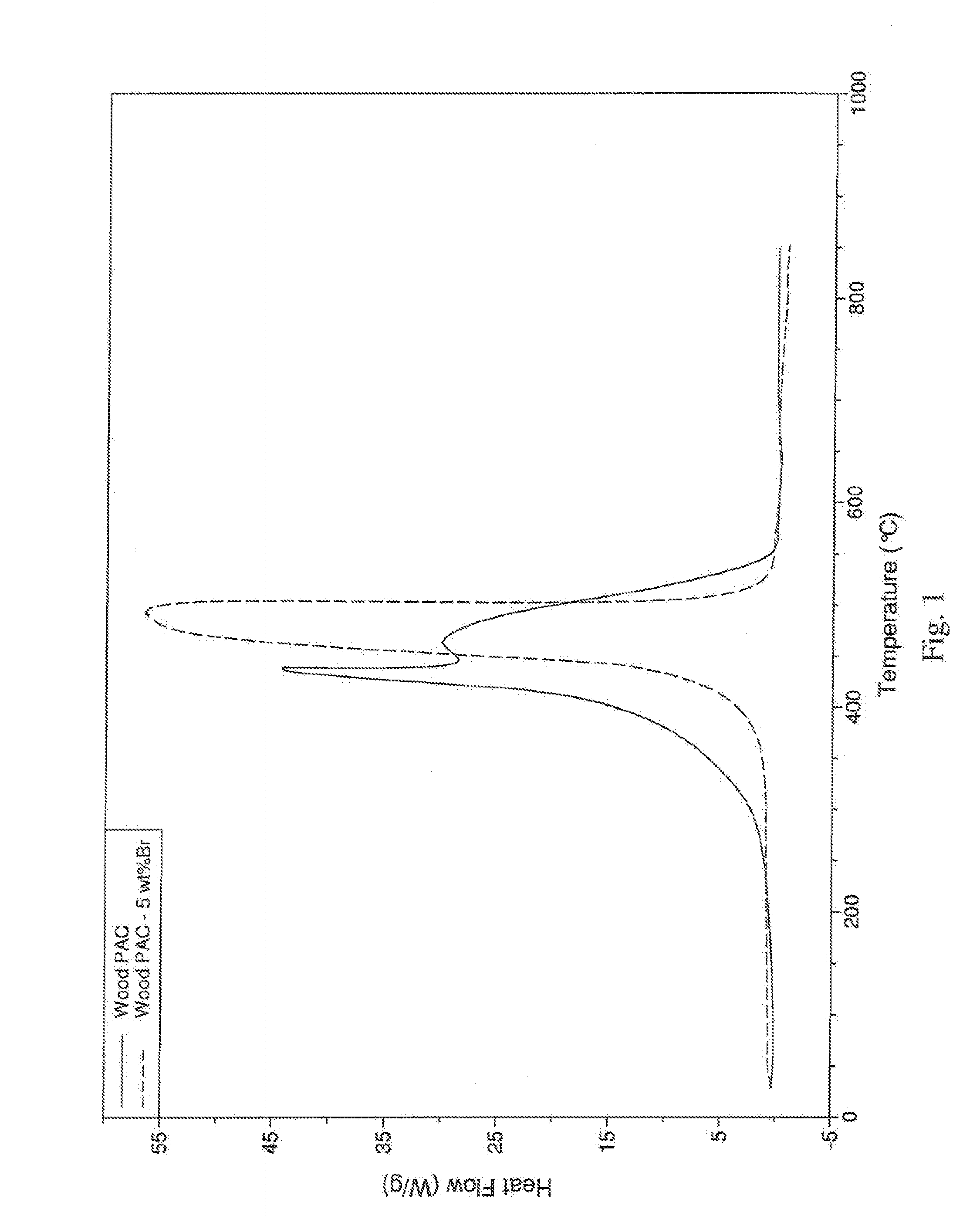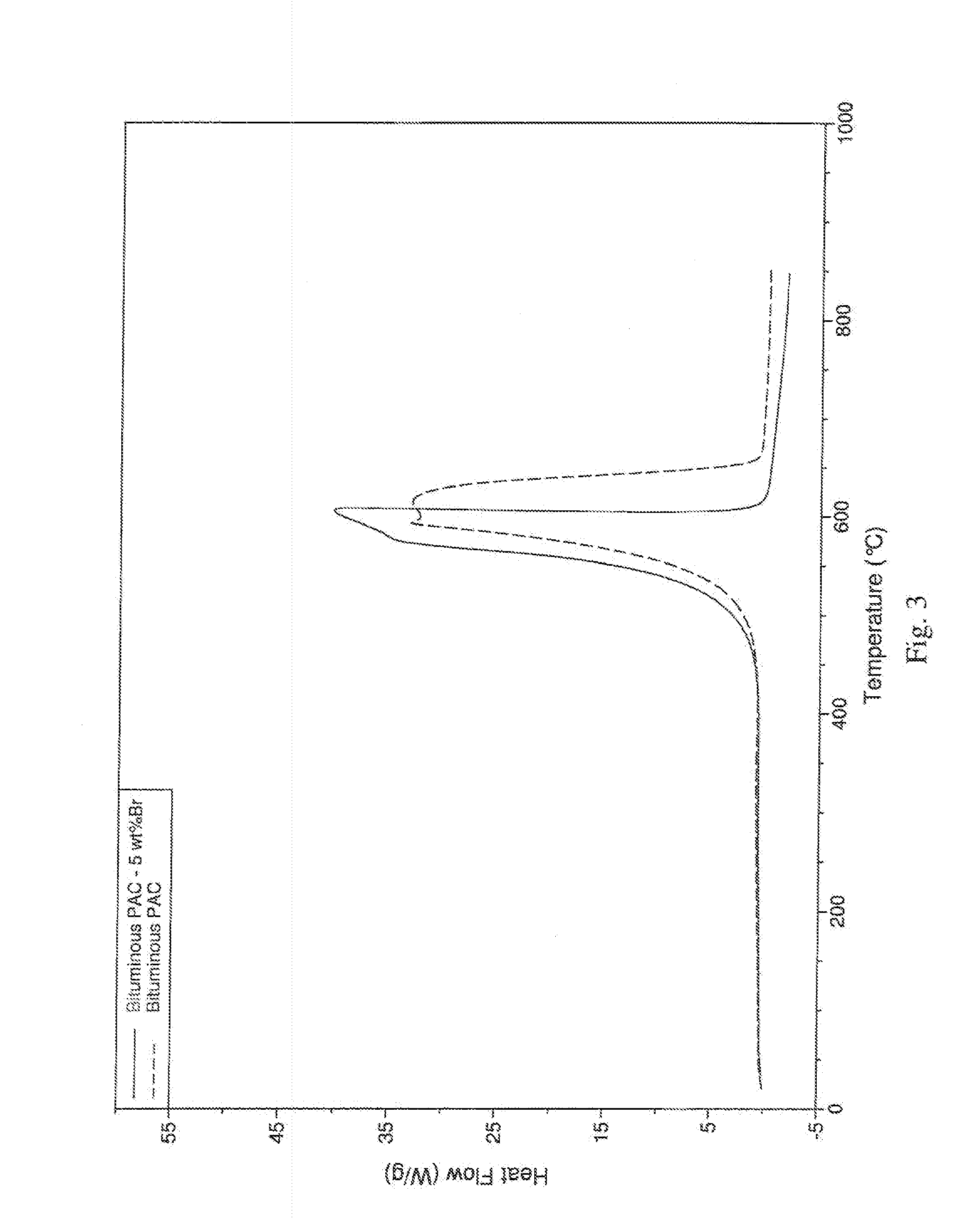Self-Ignition Resistant Thermally-Activated Carbon
a technology of thermal activation and self-ignition, which is applied in the direction of other chemical processes, separation processes, products, etc., can solve the problems of difficult direct mechanical removal of any specific gaseous component from a gas stream, other substances that do not lend themselves to direct mechanical removal, and hazardous substances that can have a deleterious effect on the public health and the environment, etc., to achieve excellent adsorption qualities and more thermal stability
- Summary
- Abstract
- Description
- Claims
- Application Information
AI Technical Summary
Benefits of technology
Problems solved by technology
Method used
Image
Examples
Embodiment Construction
[0015]The thermally-activated cellulosic-based carbons of this invention can be, as before noted, derived from cellulosic materials.
[0016]The production of thermally-activated cellulosic-based carbons, e.g., wood-based PACs, is well known and generally entails (i) devolatization or carbonization of the cellulosic material to produce a char, (ii) activation of the char and (iii) cooling / quenching of the activated char. For more detail see, Kirk-Othmer Encyclopedia of Chemical Technology, 1st Edition, Volume 4, pages 741-761 2001. The thermally-activated wood-based carbon can be produced from any wood source, such as sawdust, woodchips, or other particulate wood products.
[0017]Thermally-activated cellulosic-based carbons are commercially available. For example, thermally-activated wood-based carbons can be obtained from MeadWestvaco Corporation, Specialty Chemical Division. Thermally-activated cellulosic-based carbons can be characterized by their particle size distribution (D10, D50 ...
PUM
 Login to View More
Login to View More Abstract
Description
Claims
Application Information
 Login to View More
Login to View More - R&D
- Intellectual Property
- Life Sciences
- Materials
- Tech Scout
- Unparalleled Data Quality
- Higher Quality Content
- 60% Fewer Hallucinations
Browse by: Latest US Patents, China's latest patents, Technical Efficacy Thesaurus, Application Domain, Technology Topic, Popular Technical Reports.
© 2025 PatSnap. All rights reserved.Legal|Privacy policy|Modern Slavery Act Transparency Statement|Sitemap|About US| Contact US: help@patsnap.com



